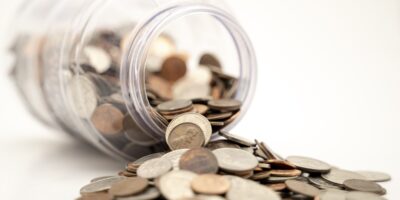“`html
Exploring the Value of a 1944 Penny
The 1944 penny is a curiosity among collectors and historians. Minted during a turbulent period, these pennies hold more than just face value. They tell stories of wartime necessity and shifts in minting practices. Understanding the value of a 1944 penny involves tracing its origin, composition, and variations.
The Historical Context
The United States was deeply involved in World War II in 1944. To save copper for the war effort, the penny’s composition had changed the previous year. In 1943, the U.S. Mint produced pennies from zinc-coated steel. However, by 1944, the scarcity of copper had eased slightly. The primary composition of 1944 pennies returned to a mix of 95% copper, 5% tin and zinc.
The Composition and Production
In 1944, the United States Mint struck these pennies at its facilities in Philadelphia, Denver, and San Francisco. The composition reverted from the steel of 1943 to a predominantly copper-based alloy. This shift aimed to balance resource conservation with traditional minting practices. The return to a copper alloy marked a significant turn in production following the steel cent experiment. The total mintage for 1944 reached over 1.4 billion across the three mints.
Key Variations and Mint Marks
1944 pennies come in several variations, each affecting their value. The presence of a mint mark indicates where the penny was minted. You can find them near the date on the coin.
- Philadelphia (No Mint Mark): The most common, with over 1 billion produced.
- Denver (‘D’ Mint Mark): Approximately 430 million pennies struck.
- San Francisco (‘S’ Mint Mark): Around 282 million pennies made.
Collectors often seek mint-condition specimens. Furthermore, pennies with mint errors, such as double strikes or off-center errors, are particularly valuable. These faults provide uniqueness and scarcity among vast numbers.
Evaluating the Value
The value of a 1944 penny depends on several factors including its condition, rarity, and demand among collectors.
- Condition: Grading ranges from Good (G) with little detail, to Mint State (MS) with no wear. A well-preserved coin fetches a higher price.
- Rarity: Although not rare, certain features like mint errors increase a coin’s value significantly.
- Demand: Historical periods such as the WWII era enhance collector interest due to its rich narrative.
Identifying Wheat Pennies
The 1944 penny is part of the Wheat Penny series, which started in 1909 and ended in 1958. Wheat pennies feature two wheat stalks on the reverse. Designed by Victor D. Brenner, the wheat penny symbolizes an iconic part of U.S. coinage. Many collectors start their journey by seeking these historical pieces.
Common Misconceptions
A common misconception exists about a 1944 steel penny. Many believe it holds significant value. However, the process was to recall any 1943 steel planchets that made it into the 1944 minting. Genuine 1944 steel pennies are extremely rare. If found, they often fetch high prices at auctions, depending on condition and authenticity. Experts recommend professional validation to certify such coins as genuine. Most ‘steel’ pennies are simply plated copper nickels or counterfeit pieces.
Market Values and Trends
Today, the numismatic market for 1944 pennies is relatively robust. Copper value alone sustains interest in lower grades. Prices for circulated 1944 pennies range from $0.10 to $0.50 typically. However, uncirculated or error coins can range into the thousands of dollars. Auctions showcase some remarkable sales of rare errors or pristine condition pieces.
Understanding Errors
Pennies with mint errors from 1944 are particularly sought after. Double die obverse errors, repunched mint marks, or displacement errors represent just a few possibilities. They occur infrequently, making each one unique. Collectors prize such errors, not just for their rarity, but for their contribution to the story of minting anomalies.
Preserving Value
Maintaining the value of a 1944 penny involves proper storage and care. Coins should be kept in a dry, cool environment away from moisture. Handling coins with gloves prevents oils and dirt from corroding surfaces. Investing in coin holders or albums can keep them safe from environmental damage. This preservation maintains condition and therefore value.
Resources for Collectors
For those interested in collecting 1944 pennies, numerous resources are available. Coin shows and auctions provide venues to observe and acquire. Joining numismatic societies offers education and a community for enthusiasts. Expert publications and literature are valuable for identifying genuine coins and learning market trends.
Whether a novice or a seasoned collector, each penny holds potential. The nuanced understanding of its journey from a minting necessity to a collector’s item showcases why the 1944 penny remains a favored subject among enthusiasts.
“`
Recommended Collecting Supplies
Coin Collection Book Holder Album – $9.99
312 pockets for coins of all sizes.
20x Magnifier Jewelry Loupe – $13.99
Essential tool for examining coins and stamps.
As an Amazon Associate, we earn from qualifying purchases.



